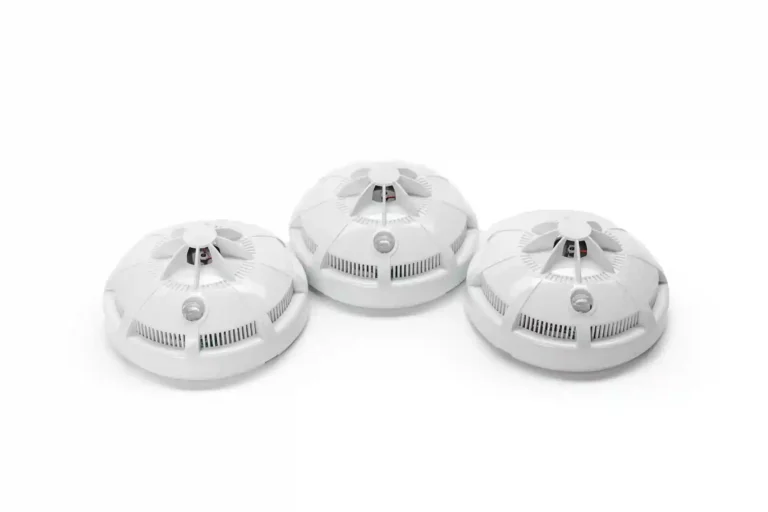Proper preparation is absolutely crucial when it comes to installing an air conditioning unit. The first step in this process is choosing the most appropriate system for your space, as this decision is both critical and determines how smooth and efficient your installation will be.
Without a doubt, this can feel like an uphill task, especially for those unfamiliar with the field. Whether it’s identifying the right conditioners for your needs or tackling the intricacies of the installation itself, this job often requires an expert hand.
To ensure everything functions efficiently, seeking out qualified HVAC technicians is often the best advice. These specialists bring extensive knowledge and experience to the table, making the most difficult aspects of the install seem manageable.
They can guide you in selecting the ideal system, address any little details that might arise, and provide services designed to help your unit perform optimally. Working with a team like Air Conditioning Services not only ensures a seamless experience but also guarantees the job is done right the first time.
Installing an AC Unit
When it comes to choosing the right air conditioner, it’s essential to focus on your home’s specific cooling needs.
With so many types available, including window ac units for single rooms, split systems for multiple spaces, you need to decide what fits your lifestyle and space.
Factors Affecting When Installing AC Unit
- Room Size
- Energy Efficiency
- Your Budget
This thoughtful approach will help you achieve the right balance between long-term savings and comfort while meeting your expectations.
Proper installation is just as important as the AC itself. Entrusting the work to a specialist ensures precise setup and optimal performance. HVAC experts not only help you choose a model that best meets your needs but also provide professional service with a warranty.
Their meticulous attention to detail ensures safety and reliability, making the process smooth and stress-free. A carefully tailored solution designed for your specific needs guarantees that your air conditioner delivers its best for years to come.
Selecting the type of AC unit that suits your needs is essential for a simpler installation process. Once you’ve chosen the right air conditioning units, a proper guide can help you determine whether to handle the task yourself or rely on a technician. Carefully track the steps for installing the unit to ensure everything is done correctly.

How to Install a Window-Mounted AC Unit
1. Prepare the Window and Measure Carefully
When installing an AC unit, it’s important to start by measuring the room to determine the right size of the unit. A properly chosen AC will ensure the space stays cool, operating efficiently and effortlessly. Next, check the dimensions of the window where the air conditioner will be placed to confirm it will fit securely.
Before proceeding, turn off the power in the installation area for safety, and wear protective gear like gloves and glasses to avoid accidents or injuries. Prepare the window by removing any obstacles or screens, then clean the sill and surrounding surface to create a debris-free workspace.
2. Secure the Mounting Brackets
When setting up your AC unit, read the manufacturer’s instructions carefully to ensure you get everything right. Use a level to check the alignment and guarantee the brackets are fixed straight. This step ensures the AC sits securely and works properly without tilting or wobbling.
3. Set up the Air Conditioner Unit
To properly place your AC unit, start by ensuring it is stable and centered in the window opening. Gently lower the sash behind the flange of the air conditioner to secure it. Always balance the unit to avoid any shifting during operation.
For added safety, ask for help if the unit feels too heavy to lift on your own!
4. Fix the Unit Securely
To attach the accordion-style panels on each side, align them carefully to fill any gaps around the window. Use screws to fix the panels securely to the frame, ensuring the air conditioner stays in place.
Place foam insulation strips around the edges to seal any potential leaks. This step not only improves the unit’s efficiency but also helps it perform better by preventing unwanted air from escaping.
5. Secure the Brackets for Proper Support
When installing your air conditioner, ensure the model doesn’t need additional support beneath it. If it does, refer to the manufacturer’s instructions to attach brackets securely to the designated areas. Proper setup ensures safety and stability for long-term use.
6. Powering Up Your AC Safely
Make sure the unit is plugged into an electrical outlet that is within reach. If the cord doesn’t reach, use a heavy-duty extension cord rated for air conditioners.
Ensure the power cord is securely positioned to avoid interference with the window operation and placed safely to prevent any potential hazards.
7. Testing Your AC Unit After Installation
Once the unit is installed, turn the air conditioner on and set it to your preferred temperature. Carefully check its operation to confirm it cools the room as expected.
Take a moment to test all the new features and familiarize yourself with its functionalities. Finally, check for any leaks around the unit to ensure everything works perfectly.

Steps to Set Up a Split Air Conditioning System
1. Selecting the Best Spots for Indoor and Outdoor Units
When setting up an AC unit, it’s crucial to choose the right indoor and outdoor location to ensure proper airflow and cooling efficiency. For the internal unit, find a high and central position in the room to allow even air distribution.
Make sure there’s enough space between the ceiling and walls for smooth operation. Outside, the outdoor unit needs a ventilated spot with adequate clearance to dissipate heat effectively. Avoid placing it in direct sunlight or near obstructions to prevent overheating, ensuring your AC works at its best.
2. Setting Up the Indoor Unit
To support the mounting plate, choose a strong wall that can handle the weight of the AC. Carefully mark the exact points for the holes to ensure perfect alignment with the plate.
Use a drill to create precise openings, then insert anchors for stability. Attach the mounting plate firmly using screws or bolts to secure it in place.
3. Create the Opening for AC Piping
When installing an AC unit, always select the right drill and bit to match the diameter of the piping. This ensures you minimize the risk of damage.
Carefully position the angle of the hole slightly downward to promote proper drainage. This helps avoid condensation buildup and allows moisture to flow away from the indoor unit effectively.
4. Routing the Pipes and Setting Up Electrical Connections
To begin, thread the refrigerant pipes through the drilled hole in the wall. Ensure the pipes don’t twist or bend during this process, as that could affect their efficiency. Once they’re in position, connect them securely to the ports on the indoor unit for proper functionality.
Next, work on the electrical wires by linking them to the corresponding terminals on the indoor unit. Follow the manufacturer’s instructions carefully to ensure a safe and accurate connection. Attention to detail here guarantees smooth operation and long-term performance.
5. Secure the Outdoor Unit
To properly mount the outdoor unit, place it on a stable surface that is perfectly level. This step is crucial to prevent vibrations, which can lead to noise and long-term damage.
Next, connect the refrigerant lines and electrical wires carefully, following the manufacturer’s guidelines. Use mounting brackets or anchors to fasten the unit securely, ensuring there is no unnecessary movement during operation.
6. Mounting the Unit and Charging Refrigerant
To prepare the unit for optimal performance, it’s essential to handle the refrigerant process carefully. Begin by using a vacuum to clear the line of any trapped air or moisture, ensuring no leaks disrupt the system. Once the line is clear, you can charge the system with the required amount of refrigerant.
This step often requires specialized equipment and the assistance of a professional. If you lack the tools, seek help from an experienced technician to complete the setup efficiently.
7. Testing and Verifying the Setup
Once installed, turn on the system and monitor its performance. Carefully assess its cooling capabilities to make sure the unit operates as expected. Ensure all connections are secure and free from leaks, delivering optimal efficiency.
Conclusion
When it comes to installing an AC unit, ensuring the process is smooth and efficient is essential for maintaining comfort and peace of mind. Whether you’re considering a standard air conditioner installation or exploring advanced options like mini-split systems, choosing reliable services plays a critical role.
Experts at Pure Eco Inc specialize in delivering exceptional AC installations, offering solutions that seamlessly integrate with your home’s HVAC system. From optimizing heating and cooling to enhancing indoor air quality, every aspect of their services is designed for your convenience. Their approach ensures improvement in comfort and energy efficiency with strategies tailored precisely to your needs.







